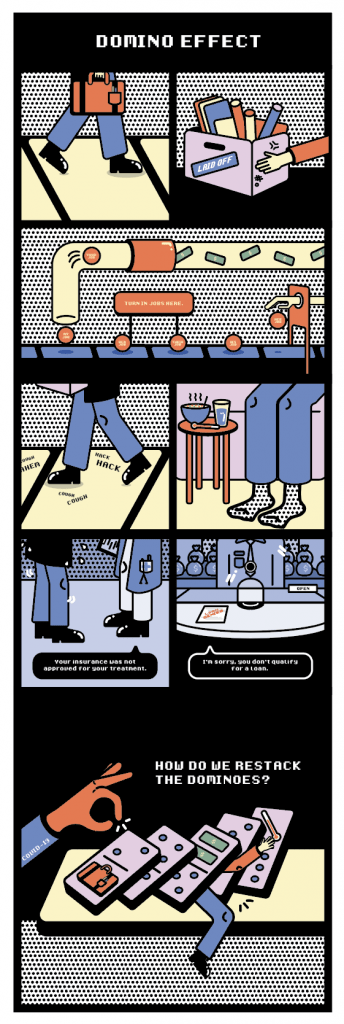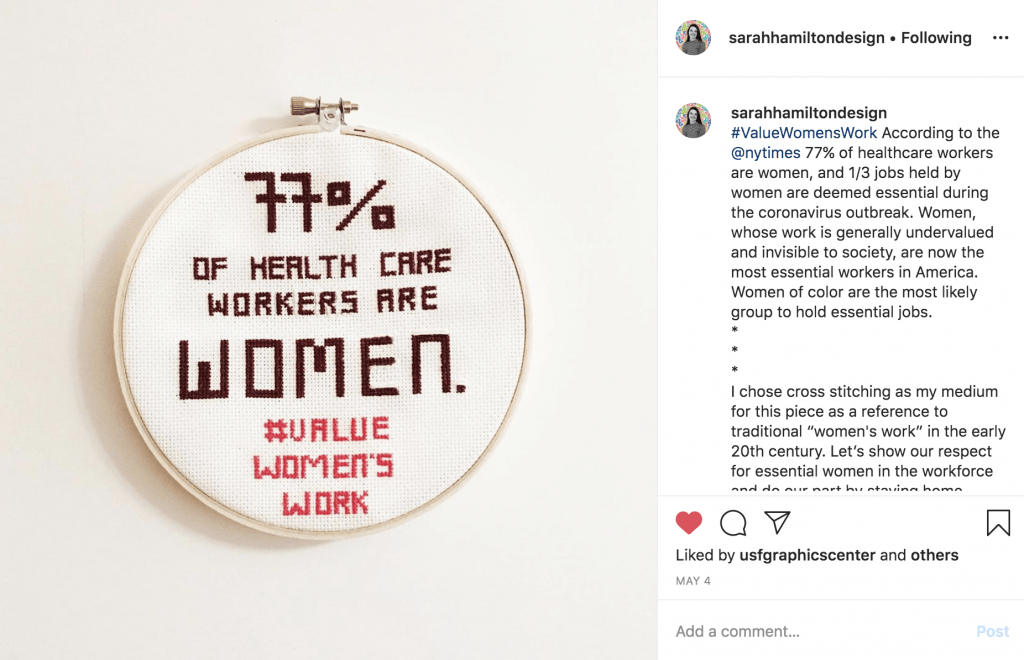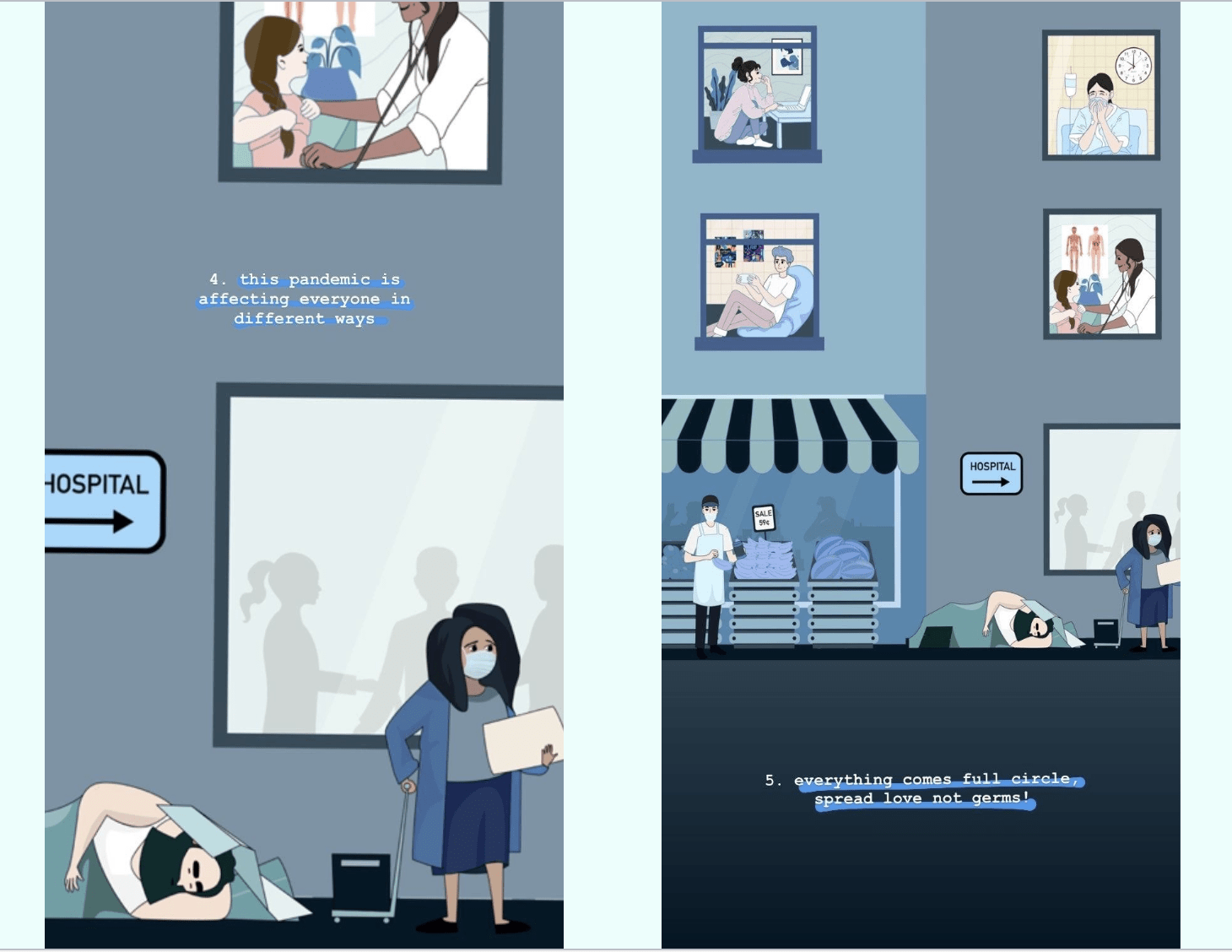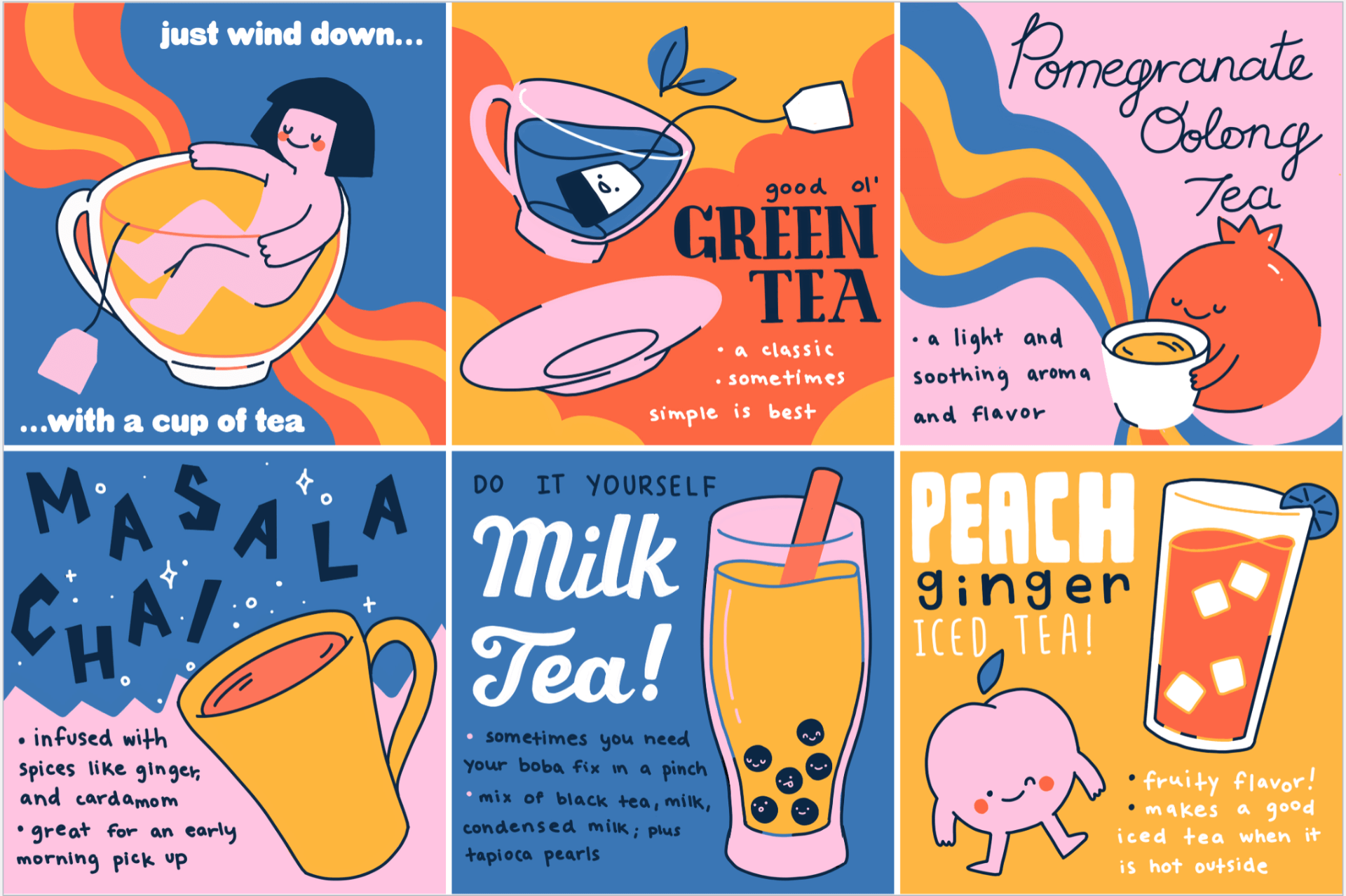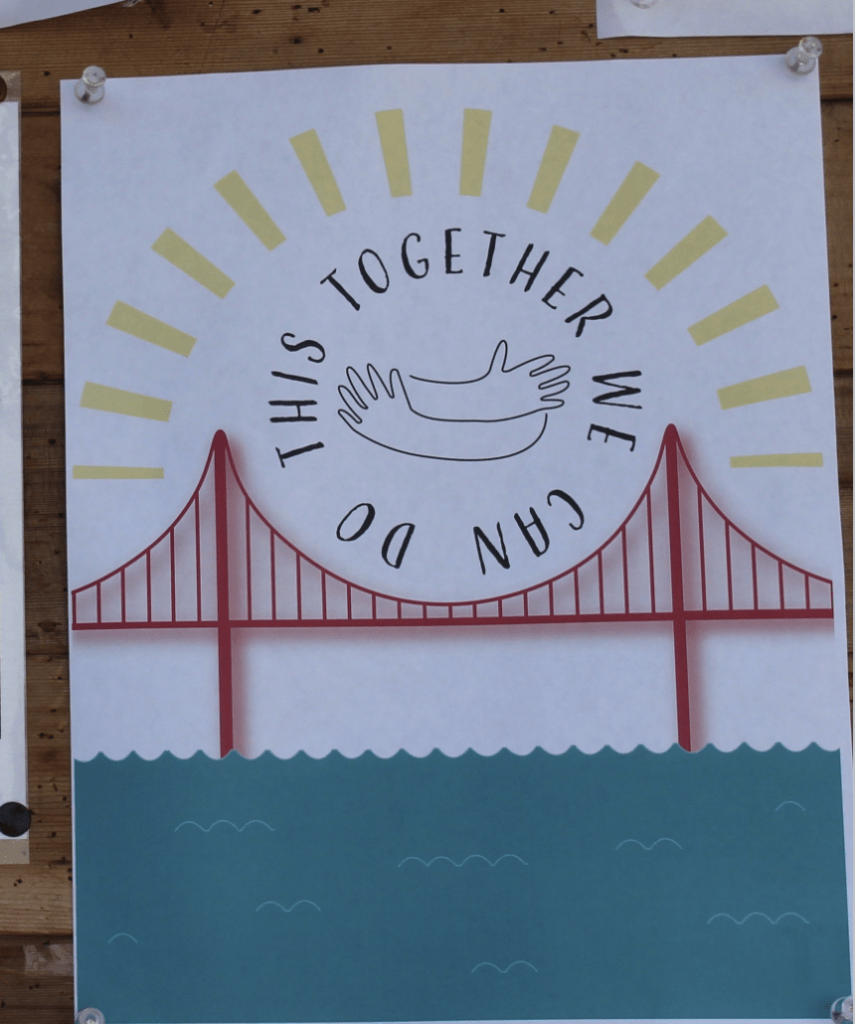Like all students, those in the Design Activism Community Engaged Learning class had their semester interrupted by the COVID-19 global pandemic. While sheltered in place and learning remotely, students were able to make the most of the semester and produce powerful works that took on a range of issues related to the pandemic.
Students in Design Activism focus the first two-thirds of the semester on designing with and for community partners. The last third of the semester allows students to create their own project advocating and bringing awareness for an issue they are personally passionate about. Typically students create public works that were often displayed throughout campus, the city, and in many communities. With shelter-in-place orders and students working from home, this semester things had to shift a bit.
Design Professor Rachel Beth Egenhoefer said she gave students the freedom to take this project in whatever direction they wanted to. The majority of students in the class chose to address issues related to COVID-19. “I wanted students to be able to keep the same assignment but also use it as a way to process what they were going through and thinking about,” Egenhoefer said. Students looked at examples of ways that activists are still getting messages out – both online and in-person during this time. Then in just a few short weeks they produced works and got them out in the world.
Design junior, Lily Turner-Kipke created an illustrated story highlighting the interconnectedness of job security, health care, and COVID-19. Describing her project she says: “job loss, especially for small, independent businesses has been a real fear, and for many, it is not something that they could overcome. My goal with this project was to visually tell a story about the feelings and fears regarding job security. I recently got laid off during the pandemic and I am lucky enough to have other financial support, but I still felt/am feeling waves of discomfort. For people who may not have financial security currently, their stress levels and worries are certainly much worse than mine and I wanted this project to resonate with those feelings.”
Design senior Sarah Hamilton highlighted the gender inequities of essential workers during this pandemic. Choosing needlepoint as a medium to reference the history of “women’s work” she cross-stitched the NYTimes statistics that 77% of healthcare workers are women. Her goal was to “bring attention to women’s work, which is generally undervalued and invisible to society” not only in healthcare but also in the home. The handmade process also helped Sarah “process the reality of the COVID-19 pandemic while simultaneously focusing on a therapeutic creative activity. Amid a mad dash to finish my senior thesis, job hunting amidst economic collapse, and saying goodbye to USF, I’m thankful this piece helped me stay grounded for a few hours at a time.” While sheltered in place, she chose social media as a platform to get her message out.
Design junior Gabby Kim created a digital illustration reflecting on the interconnectedness of individuals and the underlying impacts of COVID-19 on our communities. Zooming in and out of her thoughtful illustrations we see the story of togetherness for better or worse. Reflecting on this time Gabby shared “the pandemic has reassured my perspective of the role of design in the community. It made me realize that design is very versatile in the sense that even during a pandemic, it’s still relevant. Graphic design is a skill that can be exercised remotely, so even during a time where everyone is social distancing at home, the design community is still alive in a sense.”
Taking a more light-hearted approach, Design junior Tanvi Murugesh created a series of illustrations to bring joy and peace to those sheltering in place. Tanvi describes: “many people feel stressed, tired, and unmotivated during this time, myself included. I wanted to make a series of images that say even if you aren’t working up to your usual standards, it’s okay and that you shouldn’t feel bad about it. Working nonstop isn’t good either, so you should take breaks, try other hobbies, or simply relax when you can. As important as designing for others is, it was nice to make something that was also for me.”
While many students chose to use social media as a platform to get their messages out, others focused on making tangible messages to get out in the street. Design junior Tessa Bartholio made posters to share on community bulletin boards to “give the artwork the exposure it needed to provide a positive message.” Tessa describes that she felt “obligated as a community member to provide a message of support to my fellow neighbors during a time of crisis. To allow them to feel love, support, and kindness but also to allow light to make its way back into their lives during the dark duration of the coronavirus.”
Reflecting on the unique challenge of ending the semester remotely, Egenhoefer remarked how proud she was of students. “They still came to class every day, they reflected on what they were feeling, what they had the means to make, pushed themselves to be vulnerable, and put their voice into the world. I always tell my students we aren’t just here to make pretty pictures; the work that was created this semester goes beyond the visual and carries important messages.”
Reflecting on this time Lily Turner-Kipke says “I think the pandemic has highlighted the role of designers and artists. I find that a lot of people are turning to design or graphics to translate their feelings/emotions, and from what I see, designers are doing a fantastic job of transcribing the effect the pandemic has on people, visually. I am impressed with the work designers are doing that might revolve around the different issues the pandemic has brought up.”
